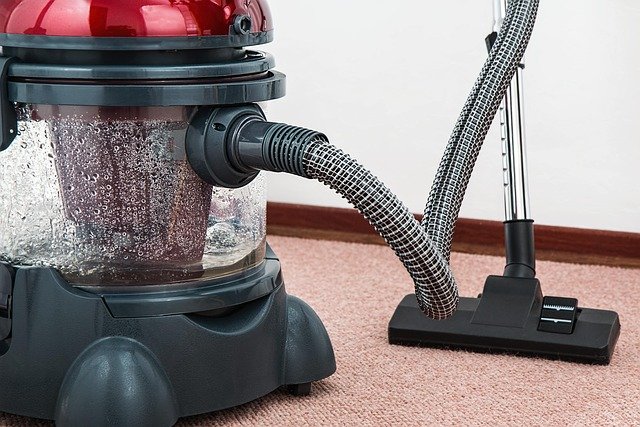Understanding How Dust Cleaning Works
Learn how dust cleaning helps keep homes and rooms neat and tidy. Explore the different ways people remove dust from furniture, floors, and shelves. Discover simple methods and tools that make dust cleaning easier and more organized while keeping spaces bright and comfortable.

What Are the Main Dust Cleaning Methods
Professional and household dust cleaning methods vary in effectiveness and application. Microfiber cloths trap dust particles through electrostatic attraction, making them more effective than traditional cotton rags that often redistribute particles. Vacuum cleaners with HEPA filters capture particles as small as 0.3 microns, removing dust from carpets, upholstery, and hard surfaces. Damp dusting with slightly moistened cloths prevents dust from becoming airborne during cleaning, while dry dusting works best for delicate surfaces and electronics.
Steam cleaning represents another effective method for hard surfaces and fabrics. The high temperature kills dust mites and bacteria while the moisture helps capture fine particles. Air purifiers with quality filtration systems continuously remove airborne dust, reducing the amount that settles on surfaces between cleaning sessions.
How Do Home Dust Removal Tips Improve Results
Systematic approaches to dust removal produce better outcomes than random cleaning efforts. Starting from top surfaces and working downward prevents cleaned areas from becoming re-contaminated. Cleaning ceiling fans, light fixtures, and high shelves first allows any disturbed dust to settle on lower surfaces that will be cleaned subsequently.
Regular washing of bedding in hot water eliminates dust mites and removes accumulated skin cells. Maintaining indoor humidity levels between 40-50% reduces dust accumulation, as extremely dry air increases static electricity that attracts particles to surfaces. Replacing HVAC filters every 1-3 months prevents dust circulation through ventilation systems.
Decluttering reduces the number of surfaces where dust can accumulate. Books, decorative items, and textiles all collect dust, so minimizing these items or storing them in closed cabinets decreases overall dust levels. Regular grooming of pets also reduces the amount of dander contributing to household dust.
Which Effective Dusting Techniques Work Best
Proper dusting technique significantly impacts cleaning effectiveness. Using long, sweeping motions rather than circular patterns prevents dust from becoming airborne. Folding microfiber cloths into quarters creates multiple clean surfaces for different areas, preventing cross-contamination.
For electronics and delicate items, anti-static dusting sprays reduce the electrostatic charge that attracts particles. Soft-bristled brushes work well for intricate surfaces like carved furniture or decorative items where cloths cannot reach effectively.
Timing also affects dusting success. Cleaning during periods of low air movement, such as early mornings or evenings when HVAC systems cycle less frequently, prevents air currents from redistributing dust during cleaning.
How Does Cleaning Household Dust Address Health Concerns
Household dust contains various allergens and irritants that affect indoor air quality. Dust mites, microscopic creatures that feed on dead skin cells, produce waste products that trigger asthma and allergies in sensitive individuals. Regular dust removal reduces mite populations and their associated allergens.
Pollen, pet dander, and fabric fibers in dust can cause respiratory irritation and worsen existing conditions. Thorough dust cleaning removes these particles from living spaces, creating healthier environments for occupants. Using cleaning methods that capture rather than redistribute dust prevents particles from becoming airborne where they can be inhaled.
HEPA filtration systems, whether in vacuum cleaners or air purifiers, meet strict standards for particle removal efficiency. These systems capture 99.97% of particles 0.3 microns or larger, effectively removing most dust-related allergens from indoor air.
What Dusting Strategies Provide Long-Term Results
Consistent maintenance prevents dust buildup that becomes increasingly difficult to remove. Weekly dusting of high-use areas and monthly attention to less-used spaces maintains manageable dust levels. Creating schedules that rotate through different areas ensures comprehensive coverage without overwhelming time commitments.
Preventive measures reduce the amount of dust entering homes. Quality doormats at entrances capture soil and particles from shoes. Keeping windows closed during high-pollen days limits outdoor allergen infiltration. Regular maintenance of HVAC systems ensures proper filtration and air circulation.
Professional deep cleaning services can address areas that homeowners find difficult to reach or clean effectively. These services typically use industrial-grade equipment and specialized techniques for comprehensive dust removal from carpets, upholstery, and ventilation systems.
Dust cleaning works through mechanical removal of particles using appropriate tools and techniques. Success depends on understanding dust composition, using effective removal methods, and maintaining consistent cleaning routines. Proper technique, quality equipment, and systematic approaches create healthier indoor environments by reducing allergens and improving air quality. Regular attention to dust removal, combined with preventive measures, maintains cleaner homes with less effort over time.




